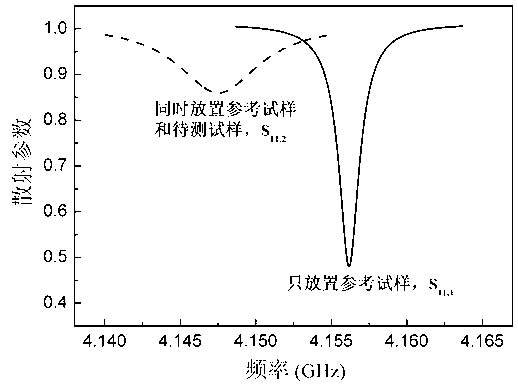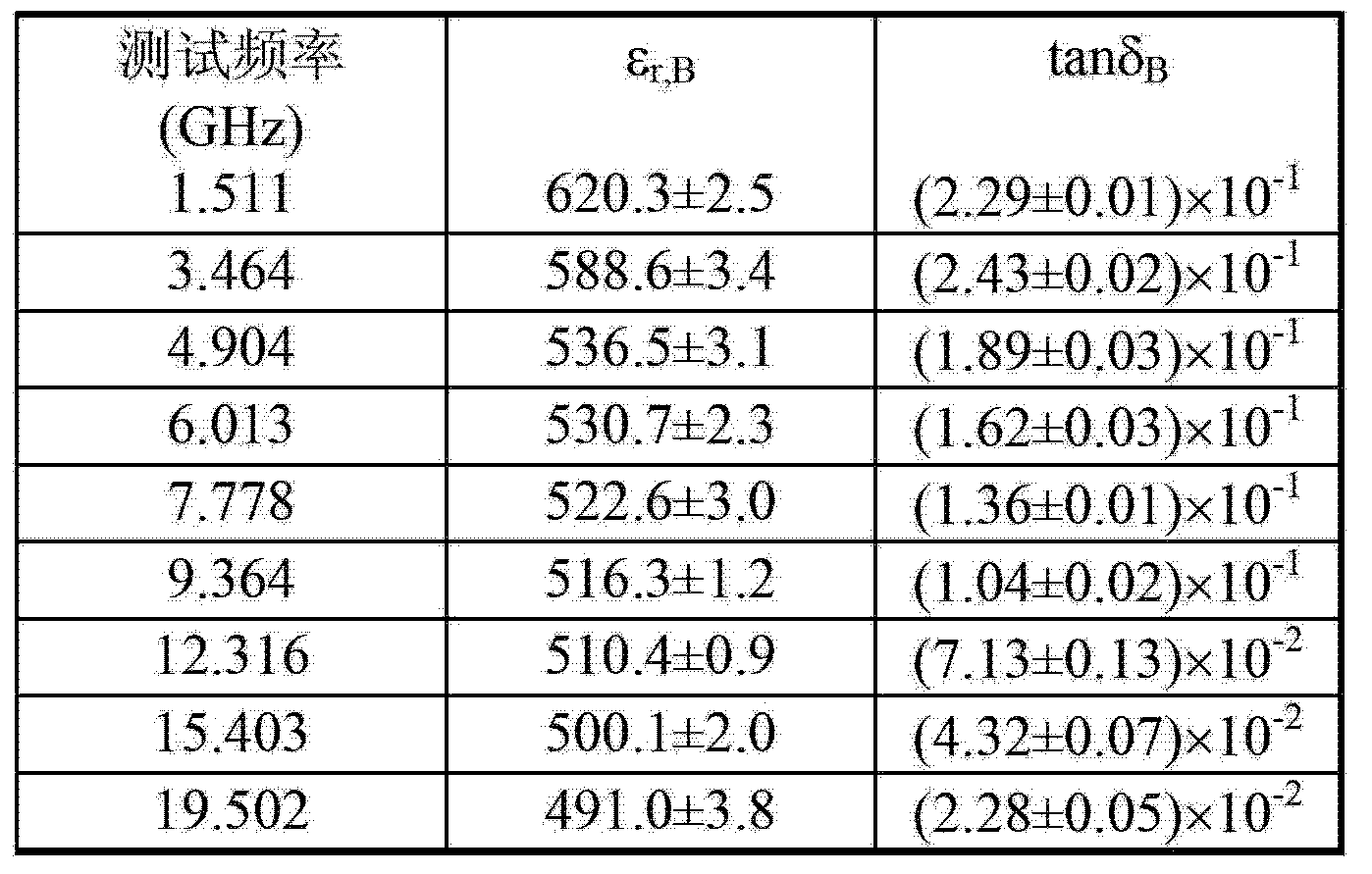Method for testing microwave dielectric property of high-loss dielectric substance
A dielectric material, microwave dielectric technology, applied in the direction of measuring resistance/reactance/impedance, measuring electrical variables, measuring devices, etc., can solve the problems of decreased test accuracy, unconsidered, and inability to guarantee test accuracy, and achieve high-precision testing. Effect
- Summary
- Abstract
- Description
- Claims
- Application Information
AI Technical Summary
Problems solved by technology
Method used
Image
Examples
Embodiment 1
[0037] For BaTiO with high dielectric loss 3 The microwave dielectric properties of ferroelectric ceramics were tested.
[0038] The sample B to be tested is BaTiO with a diameter of 2mm and a thickness of 0.2mm 3 Ceramic; low loss reference sample A is Ca with a diameter of 12mm and a thickness of 1-5mm 1.15 Nd 0.85 al 0.85 Ti 0.15 o 4 、Ba 2 Ti 9 o 20 and Ba 1.85 SM 4.1 Ti 9 o 24 ceramics.
[0039] The test results are shown in Table 1.
[0040] Table 1
[0041]
[0042] Known by table 1: test BaTiO with the method provided by the invention 3 The microwave dielectric properties of ceramics have good repeatability in the frequency range of 1-20GHz.
Embodiment 2
[0044] For CaCu with high dielectric loss 3 Ti 4 o 12 The microwave dielectric properties of ferroelectric ceramics were tested.
[0045] The sample B to be tested is CaCu with a diameter of 3mm and a thickness of 0.5mm 3 Ti 4 o 12 Ceramic; low loss reference sample A is Ca with a diameter of 12mm and a thickness of 1-5mm 1.15 Nd 0.85 al 0.85 Ti 0.15 o 4 、Ba 2 Ti 9 o 20 and Ba 1.85 SM 4.1 Ti 9 o 24 ceramics.
[0046] The test results are shown in Table 2.
[0047] Table 2
[0048]
[0049] Known by table 2: test CaCu with the method provided by the invention 3 Ti 4 o 12 The microwave dielectric properties of ceramics have good repeatability in the frequency range of 1-20GHz.
PUM
 Login to View More
Login to View More Abstract
Description
Claims
Application Information
 Login to View More
Login to View More - R&D
- Intellectual Property
- Life Sciences
- Materials
- Tech Scout
- Unparalleled Data Quality
- Higher Quality Content
- 60% Fewer Hallucinations
Browse by: Latest US Patents, China's latest patents, Technical Efficacy Thesaurus, Application Domain, Technology Topic, Popular Technical Reports.
© 2025 PatSnap. All rights reserved.Legal|Privacy policy|Modern Slavery Act Transparency Statement|Sitemap|About US| Contact US: help@patsnap.com



